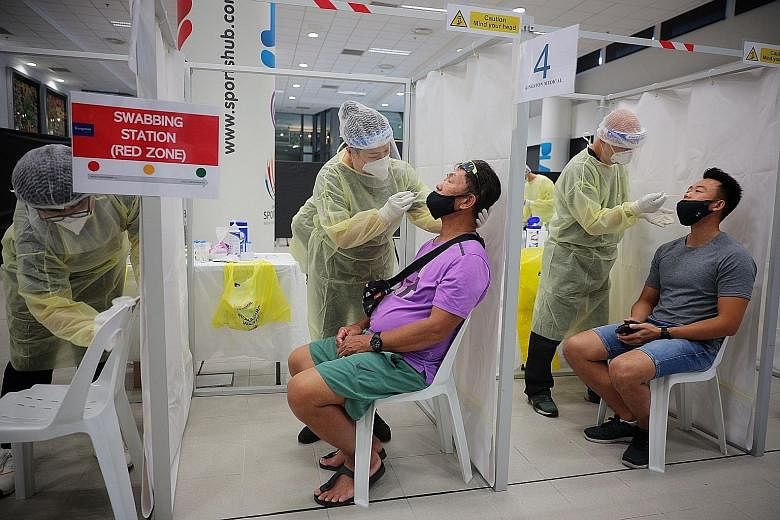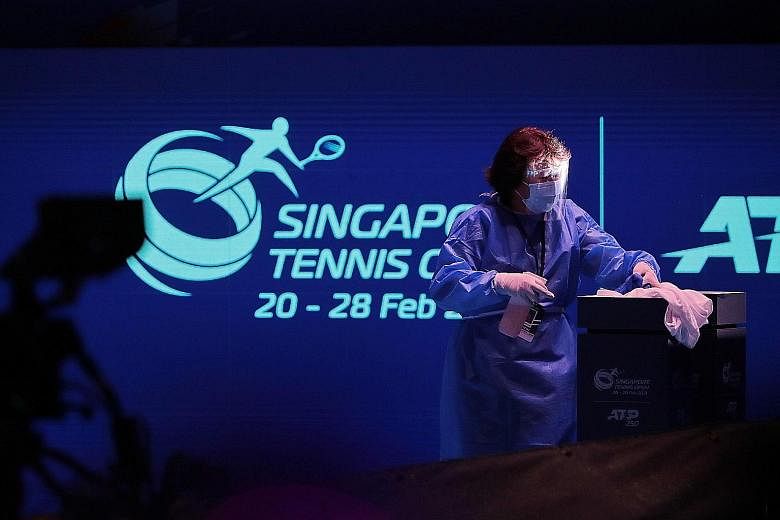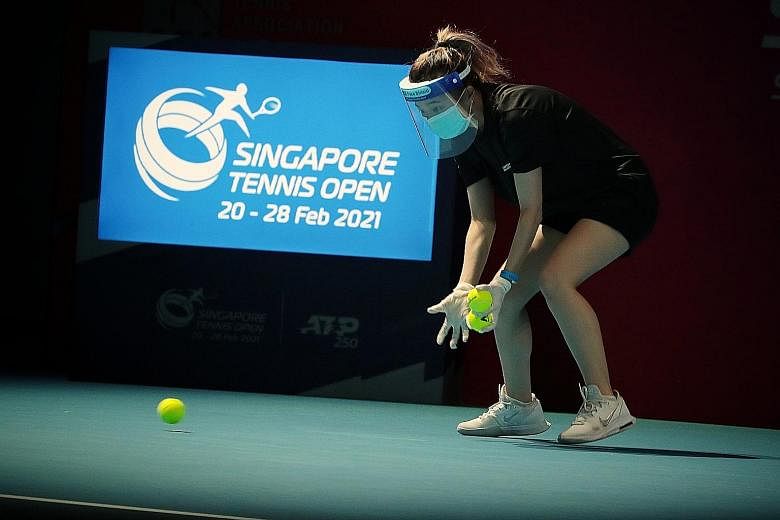Local tennis players Shaheed Alam and Roy Hobbs got a taste of what international competitions might be like in the future during the Feb 22-28 Singapore Tennis Open (STO).
Each received a wild card into the singles qualifying round and moved into the tournament bubble with the overseas players a few days before qualifying started on Feb 20 at the OCBC Arena. That meant that they also had to deal with the strict protocols which included taking a daily polymerase chain reaction (PCR) test and moving only within their own "micro bubbles".
Tournament organising chairman Lim Teck Yin, who is also the chief executive officer of Sport Singapore, said on Feb 19 that no effort was spared to maintain micro bubbles. Groups at various levels could not mix.
The players were housed on eight floors of the Pan Pacific Hotel, with two rooms on each floor converted into gyms for those on that level. They also had exclusive access to the 22nd floor for dining and massages.
In the dining area, the players ate only with members of their own entourage in cubicles. Meals were ordered beforehand and placed on tables by servers who would leave before the entourage arrived.
Players could leave their rooms only for meals, gym training, practice sessions and matches, but had no restrictions on how long they could be out for. They could travel only with members of their own entourage.
At the tournament venue, staff, officials and players also operated in separate bubbles to minimise interaction.
Virtual press conferences, electronic line judges and dedicated socially-distanced zones were in place to further segment the working groups.
Ball kids had to wear gloves, masks and face shields and did not handle players' towels. New balls were also used at every session to minimise the chance of cross-infection.
Some staff and officials such as the swabbing team and racket stringers were also required to don full personal protective equipment.
Shaheed, 22, said he was initially nervous about taking the PCR test but got used to it after a few times.
He said he found the travel restrictions "quite normal" because that would also be his routine when he competed overseas.
"It's mostly just hotel to courts and back unless I have meals at a nearby mall," he added.
After his last match on Feb 22, he was placed on a stay-home notice and could only check out of the hotel three days later.
Lim explained that the stringent protocols were there because it was important to instil confidence that "in spite of the pandemic situation, we're able to comply with national protocols and minimise all risks associated with Covid-19" when hosting an international event such as the STO.
While the biggest name in the tournament, 2014 US Open champion Marin Cilic, did confess that he struggled a little with the monotony of "practising then going back to the room" he still had praise for the level of organisation.
He hailed the tournament as "one of, if not the best, indoor tournaments" he has played in.
He added: "The two match courts and the three practice courts are incredibly good and I know there are many indoor tournaments struggling to have this many courts on a quality like this." Laura Chia




